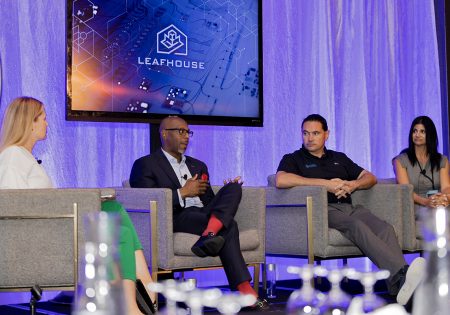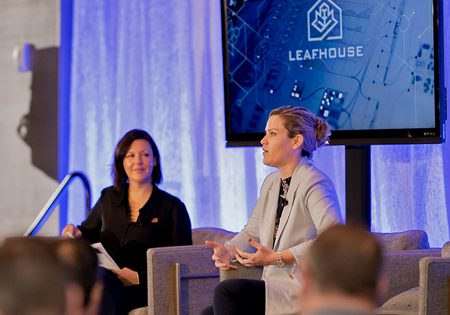PANC 2020: Virtual One-on-Ones, How Workplace Retirement Advice Is Changing
Advisers discussed their strategies for reaching retirement plan participants, the technology they use and the pros and cons of the new virtual environment.
As the last day of the 2020 PLANADVISER National Conference was coming to a close, advisers met, virtually, to discuss virtual meetings with participants.
Tristan Talley, vice president, wealth management, Bukaty Companies Financial Services, said there are six individuals on his team who used to go out on a daily basis for on-site visits at plan sponsor companies, but they have moved to virtual meetings since March 12. “We moved from on-site to using video- and teleconferencing with participants,” he said. “We distributed pre-recorded videos and took requests for virtual one-on-ones.”
Jeffrey M. Petrone, managing director, SageView Advisory Group, said his team migrated from two physical office locations to employees’ homes in late February. “We had already been doing virtual team meetings on Fridays, but we used to client interaction on-site, so that changed a lot,” he said.
Talley said the very first communications his firm sent to participants amid the coronavirus pandemic were about what was going on in the market and how that may affect their retirement. “We had weekly Zoom meetings for participants and plan sponsors. We sent constant reminders of what meetings were coming up,” he said. “We used to do webinars all the time, but they were usually just presentations without participant interaction. Zoom changed that. We get to see participants and they interact.” Talley said he thinks when participants get involved and have conversations, it produces better outcomes for them.
Petrone’s team replaced group meetings with webinars. “It’s an effective way to start conversations,” he said. “In March, when we had all that market volatility, we had over 3,000 participants attend one.” Petrone’s team had a speaker series for both participants and sponsors, and team members saw a change in what topics clients wanted. “In February and March, webinars were about volatility, and we had several pre-retirement counseling webinars,” he said. “Now, we’re seeing more demand for budgeting and general financial wellness.”
Tech Choices and Participant Privacy
Some of SageView Advisory Group’s team members had been using an online scheduler for some virtual meetings, but now the entire team has migrated to that online platform. Petrone said his team uses 10to8 for online booking. It has the ability to integrate the entire team’s calendars so managers can draw from several people’s calendars to fill availability, he said. Petrone added that 10to8 can also create customized questions to ask clients why they are scheduling meetings so team members know what to address. It saves the answers to the questions so advisers can revert back to it. “We can get answers to risk questionnaires that can be built on 10to8. We can also do the questionnaire during the live meeting and 10to8 will populate responses as we go along,” he added.
Petrone said his team does most of its videos in Vimeo. Team members can embed links and whatever content they want to distribute. The company also uses Adobe Premiere for graphics.
Talley’s team switched from GoToMeeting to Zoom for video meetings. His team also uses an online scheduler, which not only allows colleagues to schedule meetings, but also allows clients to schedule them as well. He added that the company also hired an organization to take and edit videos and “make them look very professional.”
As for participant privacy, Talley said his team used the Health Insurance Portability and Accountability Act (HIPAA) as its guide. “We figured if HIPAA was changing, maybe some of that, from a compliance perspective, is what we should be thinking about,” he said. Talley added that his team records some Zoom calls so advisers can go back and reference what was said. He also noted that “everything is DocuSigned or Adobe signed. It’s even more valuable technology now.”
Petrone said his team also records Zoom meetings. Staff members send electronic documents through the company’s customer relationship management (CRM) software.
Pros and Cons of the New Virtual Environment
“Even if you have a great interface and tools, ‘If you build it, they will come’ is not true for participants,” Petrone said. “Advisers have to be constantly doing outreach. For example, as we were tracking CRDs [coronavirus-related distributions] and loans from providers’ feeds, we reached out to each participant with a worksheet with money hacks on it. We asked if they were considering their personal financial balance sheet. They have challenges but there are also opportunities like refinancing their house.”
“Within our organization, some were champions of using video technology, but I wasn’t one of them,” Petrone said when asked about the positives of the new virtual environment. “But now, so much extra time has been created because of this.” He explained that driving to plan sponsors’ businesses that are far away takes up a lot of time. “As soon as we leverage [the extra time] the best way possible, I think it will improve productivity and make available more resources,” he added. “We have more time to educate and have advice meetings. As we get better, we will have an exponentially more positive impact.”
Talley said his team found that not everyone is comfortable on video. “Some team members don’t always love being on camera, even if they are with a client they have always dealt with,” he said. “We had to figure out solutions to help them, like a teleprompter, for example.”
The best outcome of the new virtual environment is participants’ willingness to adapt to a new form of communication, Talley said. “Another positive is it forced us to think differently.”
Another positive for staff, Petrone mentioned, is that if an adviser was in a satellite office, he or she may have felt more left out or that they didn’t the get same resources as those in the home office. “Now, we’re all the same, so I think that will improve going forward,” he said.
Talley said technology was probably the No. 3 line item on his team’s profit and loss (P&L) statement after people and office space. “Now, we’ve been pushed to make tech a priority for spending our dollars,” he said. “We look at diff tech—there’s a lot of fintech in this space, and we look at how to improve the integration of systems.”
Talley noted some interesting things providers are doing in the virtual environment. Some are holding direct calls with participants. One created a virtual scavenger hunt for a benefits fair. “They’ve had to rethink how to get people engaged. They used to lure people with tchotchkes. Now what?” he said.
Petrone said there are a lot of opportunities in leveraging data to help participants make decisions. “As we get more information from provider data feeds, it will make sense to invest in more tools to create better outcomes for participants. Data shows us more opportunities to engage people,” he said.
Petrone added that there are some providers that have made a concerted effort to capture emails so advisers can very quickly respond to specific things such as who is considering taking a CRD. “Some providers are ahead of that game and more helpful,” he said. “As default communications go electronic, those partners are going to be even more valuable. The more we can send communications efficiently, the more we can hit the bull’s-eye. We can’t do that if we’re only reaching out one or two times.” Petrone explained that by sending regular communications about different topics, a certain subject is more likely to resonate with a participant at the right time.
Alexandra Moen, regional plan consultant, Francis Investment Counsel LLC, who moderated the panel discussion, said she has noticed that some providers “really have educated call center employees about CRDs and expanded loan limits.”
Petrone said advisers and providers have been working collaboratively during the virtual environment. He said, generally, no one is stepping on anyone else’s toes. “We offer a ‘Who do you call for what’ list during each engagement,” he said.
“I think we will be able to keep doing virtual meetings with plan sponsors. I don’t think all of this will go away, because, in some ways, it’s so much easier,” Petrone said. “I think we will get better at scale—using technology for more—as we go along.”
“I don’t anticipate us not getting back to in-person meetings,” Talley said. “That face-to-face, human touch shows we care and are with them, and it causes them to jump in and stay more engaged.”You Might Also Like:

Know Where the Puck Will Be

Insights on What Really Matters to Participants

Advisers Can Help Women Add to Growing Retirement Confidence
« PANC 2020: Prospecting and Closing New Business in a Socially Distant Normal